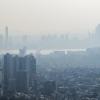
Options Magazine, Summer 2023: The World Bank's newest report features a collaboration with IIASA researchers in combating air pollution in South Asia.
South Asia is home to nearly two billion people. It is also home to the most polluted air on the planet, with nine of the world’s 10 most air polluted cities. Some of the more densely populated and poorer areas have air quality 20 times worse than what the World Health Organization considers to be healthy.
In addition to negative environmental and economic impacts, air pollution in South Asia is also deadly to residents. It is estimated that roughly two million premature deaths occur annually as a direct result of air pollution.
In a new report from The World Bank, with collaboration from IIASA, Pollution Management Research Group Leader in the IIASA Energy, Climate, and Environment Program, Zbigniew Klimont and colleagues, identified local and regional pollution sources in this region in airsheds shaped by meteorology and topography. Additionally, the researchers analyzed scenarios for reducing air pollution and offered a roadmap for air quality management.
“Air pollution has been a major issue in South Asia, contributing to severe health impacts and economic costs. The research clearly shows that direct economic gains of better air quality far exceed the cost of measures needed to reduce air pollution,” says Klimont. “The most cost-effective scenario to reduce air pollution, with varying degrees of policy implementation and cooperation among countries, calls for full coordination between airsheds. This scenario would cost US$278 million but save more than 750,000 lives annually.”
By Jeremy Summers
Publication
International Bank for Reconstruction and Development / The World Bank (2023). Striving for Clean Air: Air Pollution and Public Health in South Asia. Retrieved from https://www.worldbank.org/en/region/sar/publication/striving-for-clean-air
